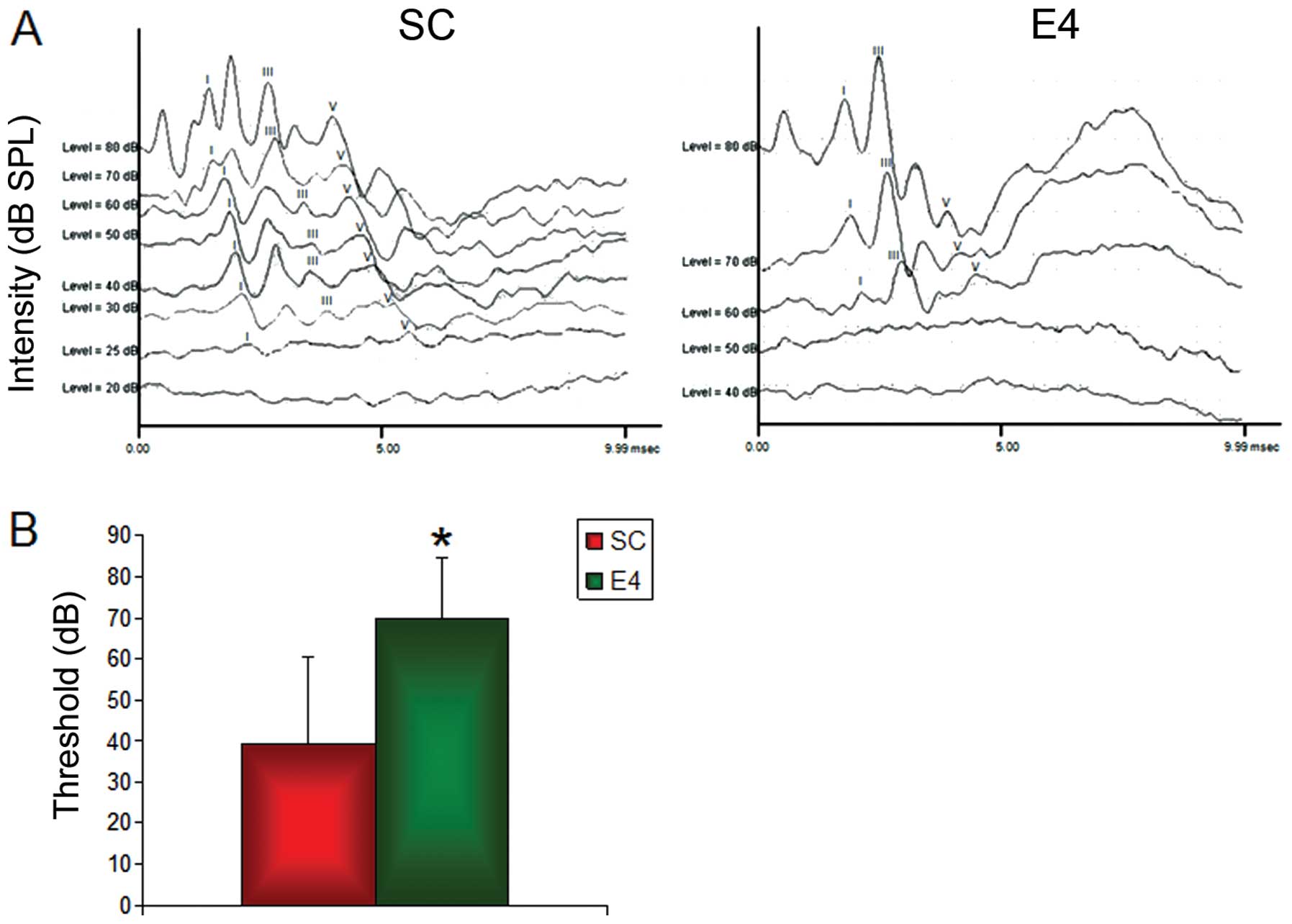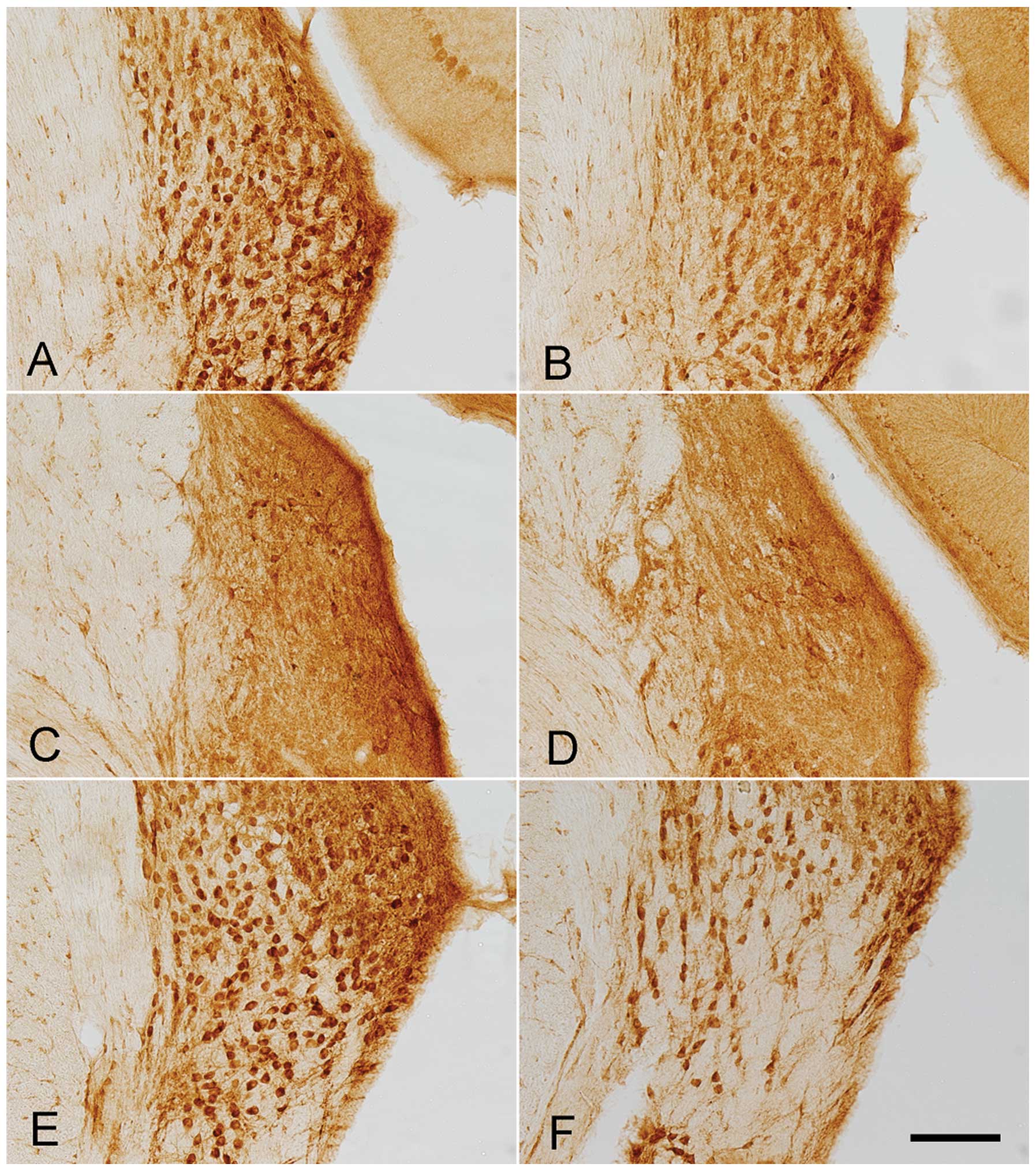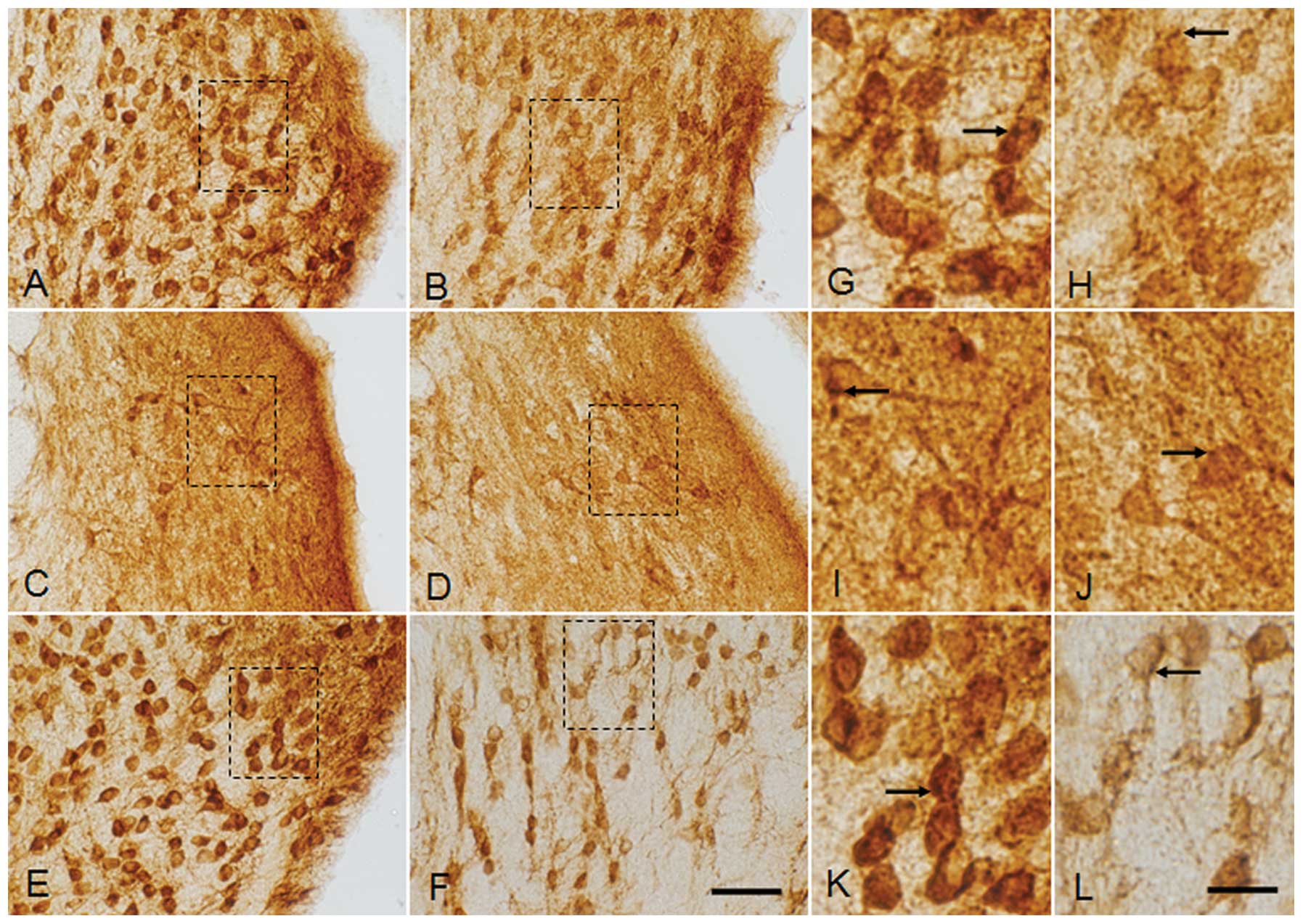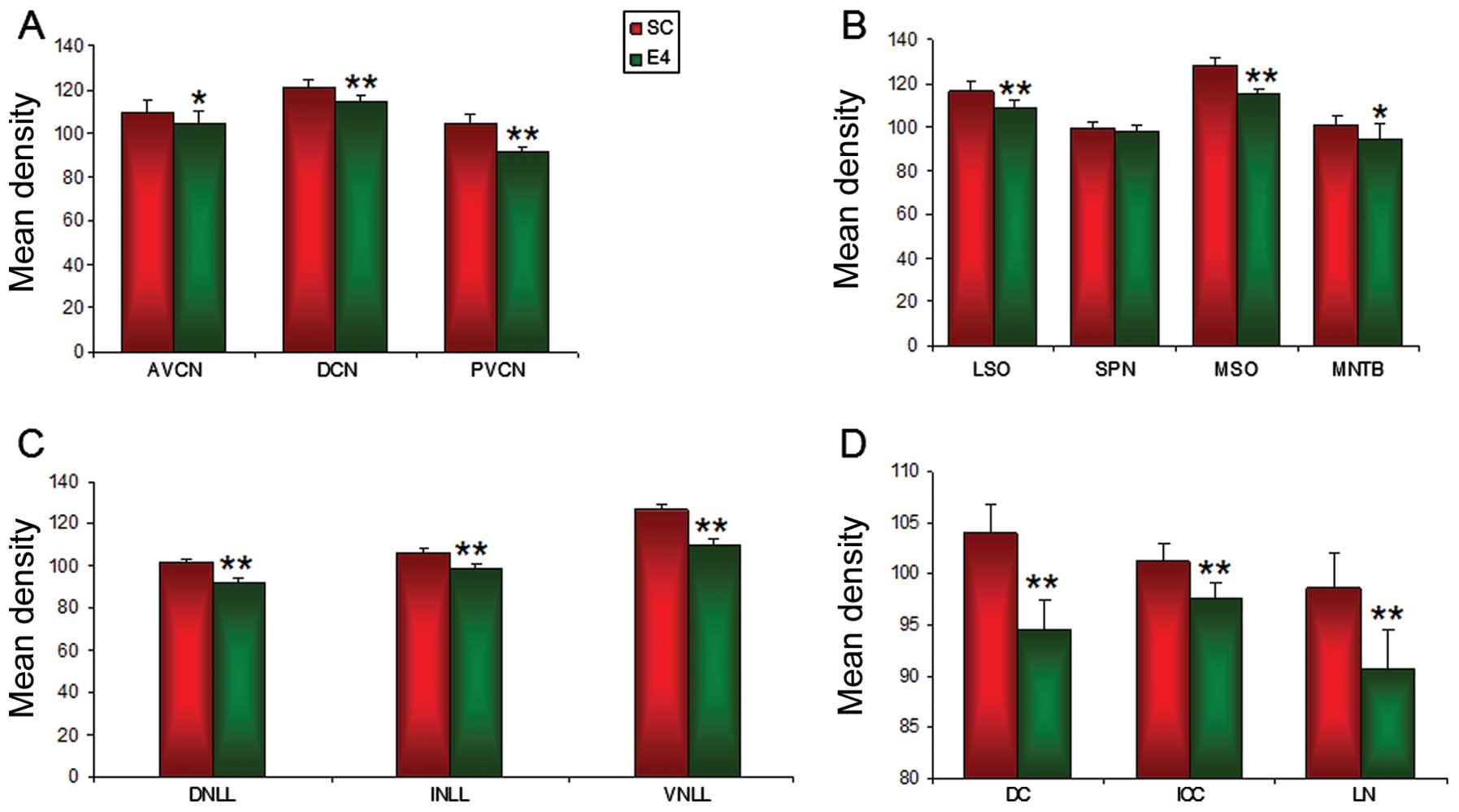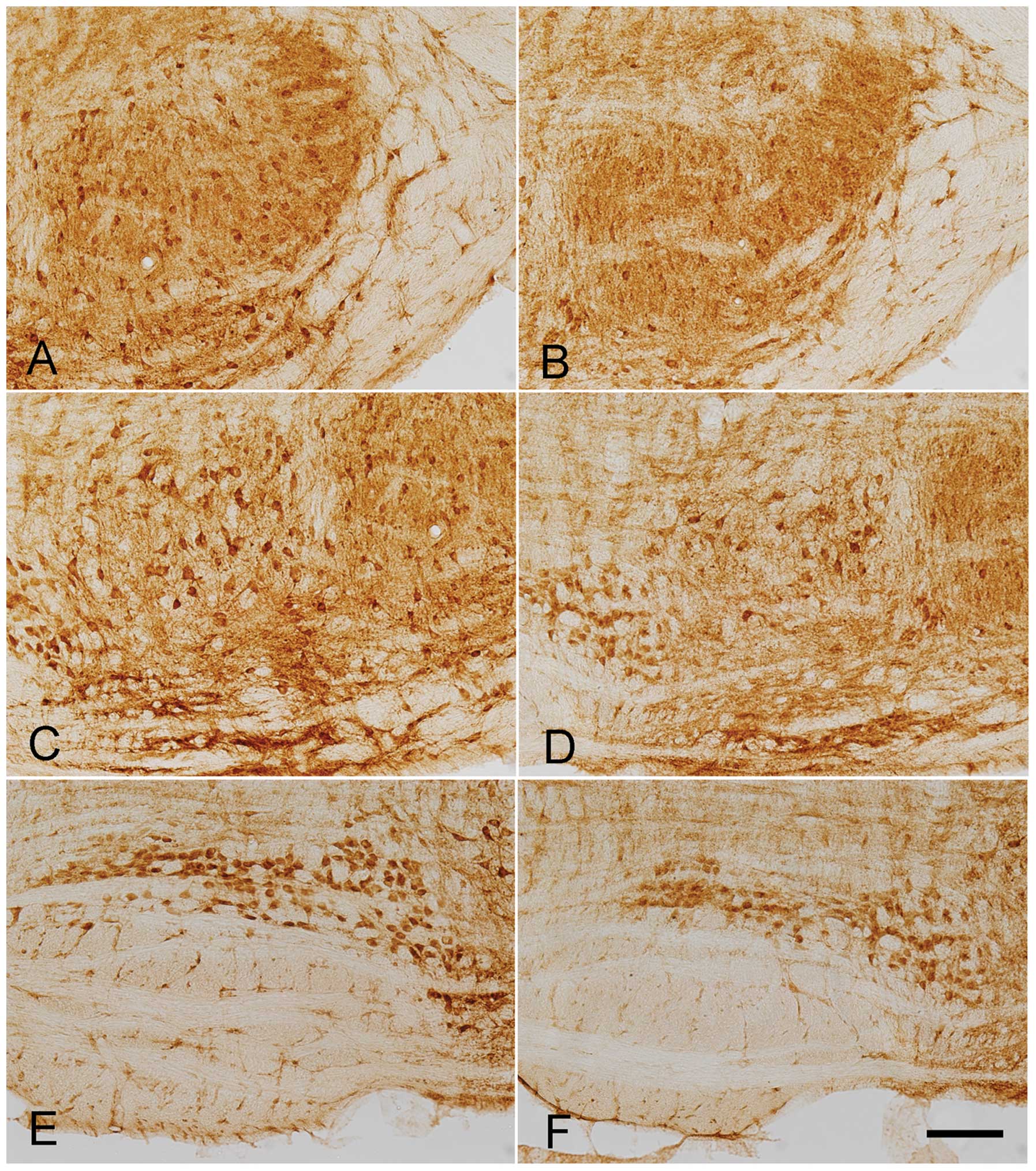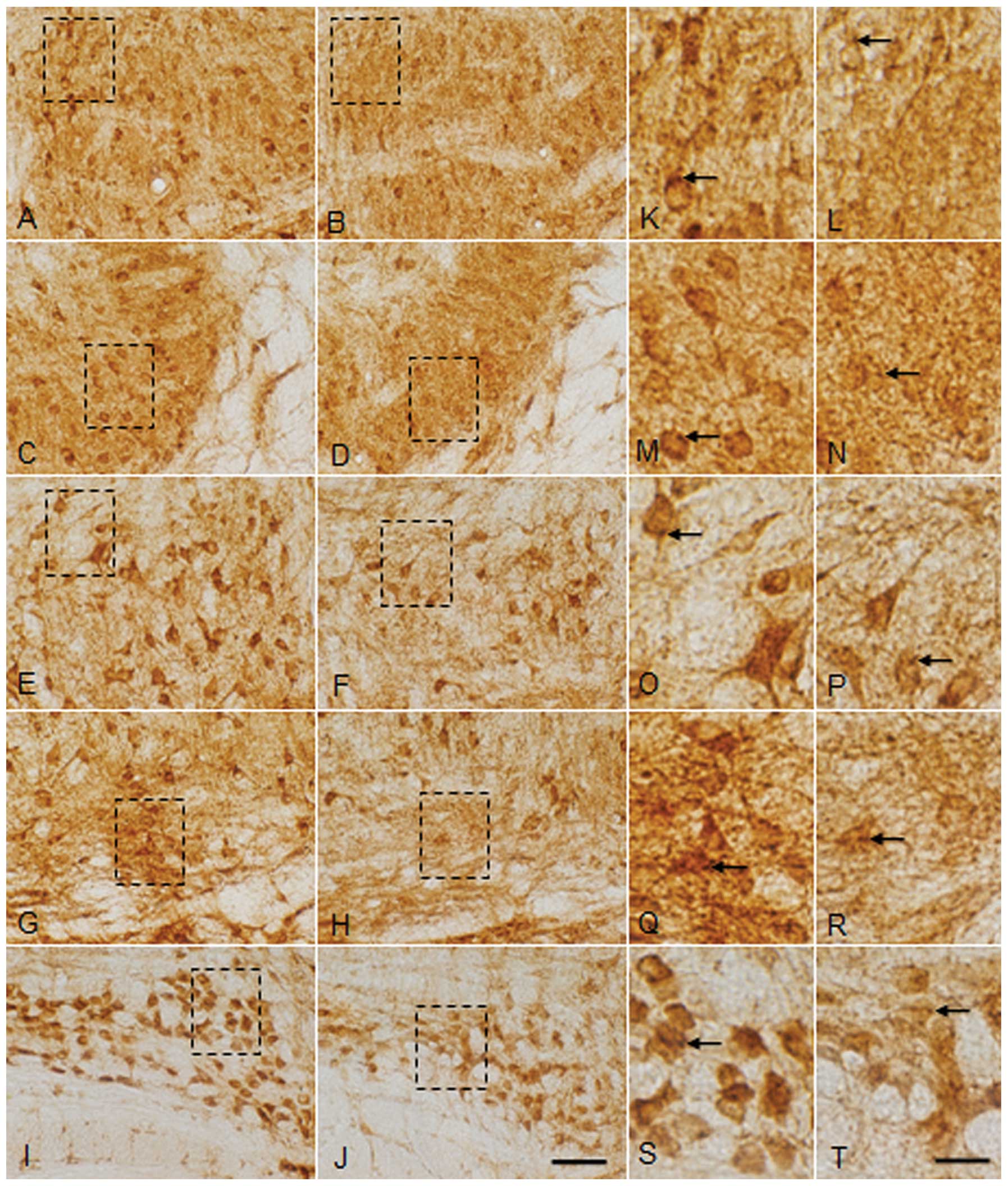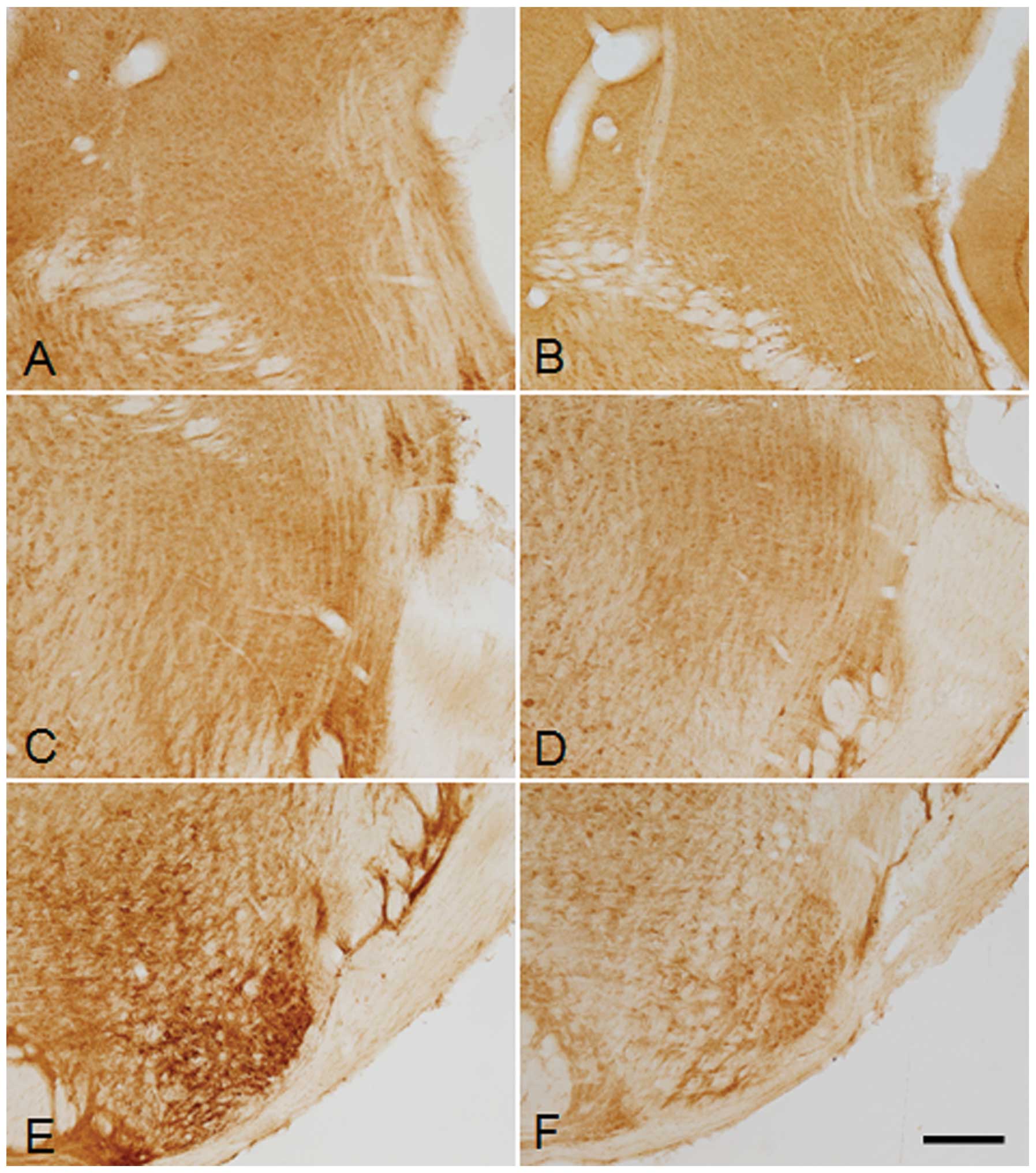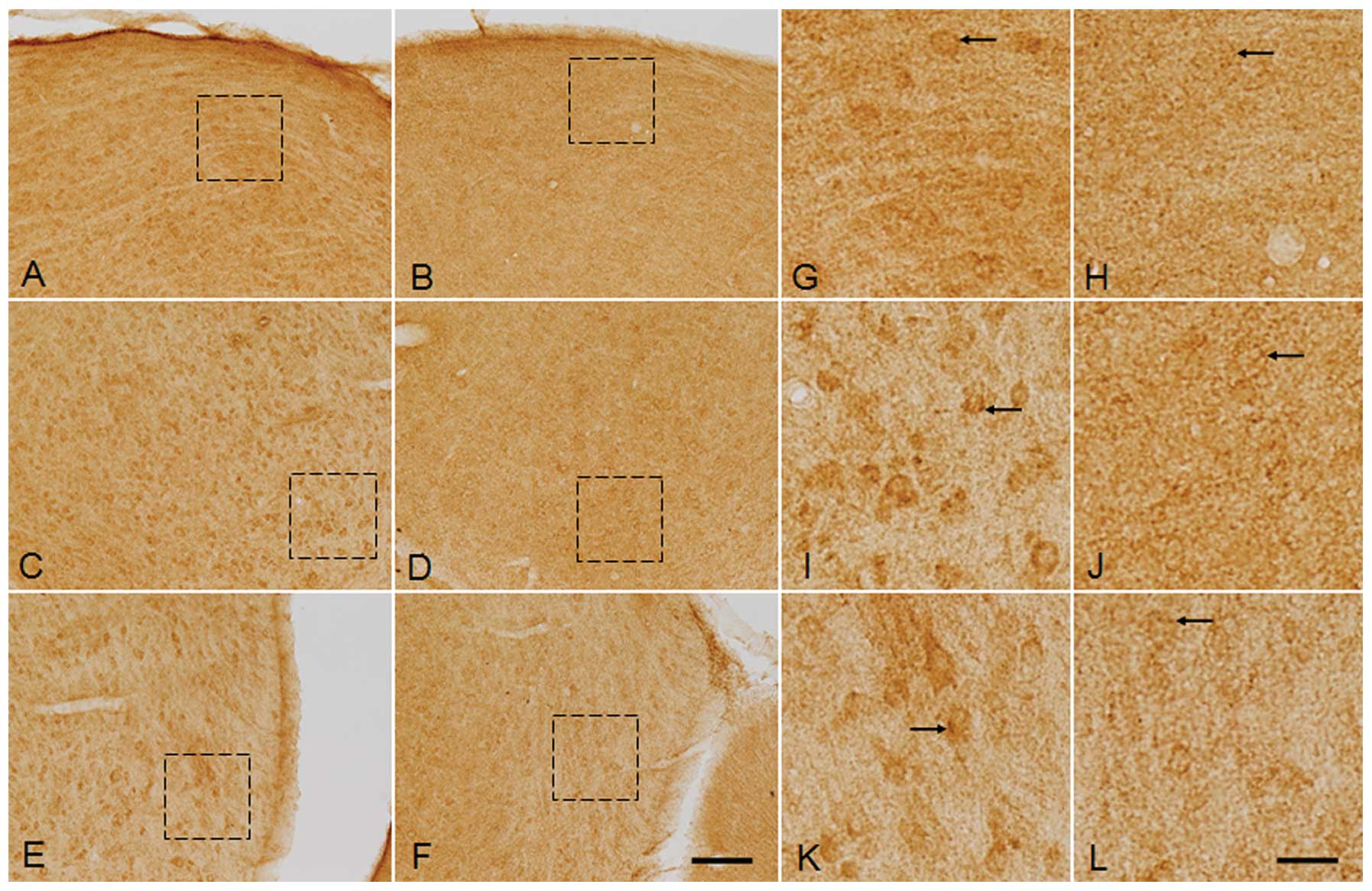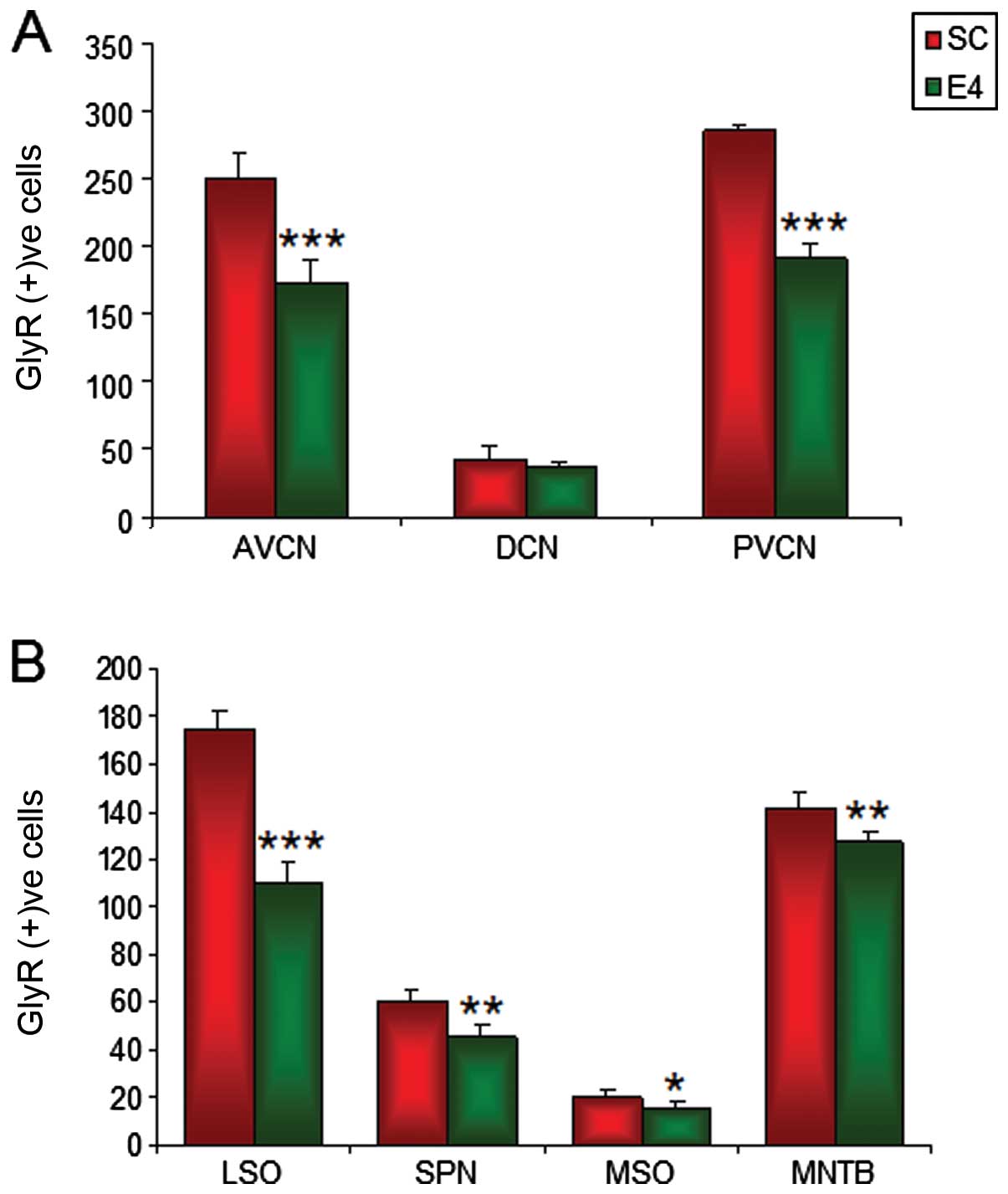|
1
|
Frey AH: Headaches from cellular
telephones: are they real and what are the implications. Environ
Health Perspect. 106:101–103. 1998. View Article : Google Scholar : PubMed/NCBI
|
|
2
|
Borbély AA, Huber R, Graf T, Fuchs B,
Gallmann E and Achermann P: Pulsed high-frequency electromagnetic
field affects human sleep and sleep electroencephalogram. Neurosci
Lett. 275:207–210. 1999.PubMed/NCBI
|
|
3
|
Manikonda PK, Rajendra P, Devendranath D,
Gunasekaran B, Channakeshava, Aradhya RS, Sashidhar RB and
Subramanyam C: Influence of extremely low frequency magnetic fields
on Ca2+signaling and NMDA receptor functions in rat
hippocampus. Neurosci Lett. 413:145–149. 2007. View Article : Google Scholar : PubMed/NCBI
|
|
4
|
Mausset AL, de Seze R, Montpeyroux F and
Privat A: Effects of radiofrequency exposure on the GABAergic
system in the rat cerebellum: clues from semiquantitative
immunohistochemistry. Brain Res. 912:33–46. 2001. View Article : Google Scholar
|
|
5
|
Salford LG, Brun AE, Eberhardt JL,
Malmgren L and Persson BR: Nerve cell damage in mammalian brain
after exposure to microwaves from GSM mobile phones. Environ Health
Perspect. 111:881–883. 2003. View
Article : Google Scholar : PubMed/NCBI
|
|
6
|
Maskey D, Pradhan J, Aryal B, Lee CM, Choi
IY, Park KS, Kim SB, Kim HG and Kim MJ: Chronic 835-MHz
radiofrequency exposure to mice hippocampus alters the distribution
of calbindin and GFAP immunoreactivity. Brain Res. 1346:237–246.
2010. View Article : Google Scholar : PubMed/NCBI
|
|
7
|
Bas O, Odaci E, Kaplan S, Acer N, Ucok K
and Colakoglu S: 900 MHz electromagnetic field exposure affects
qualitative and quantitative features of hippocampal pyramidal
cells in the adult female rat. Brain Res. 1265:178–185. 2009.
View Article : Google Scholar : PubMed/NCBI
|
|
8
|
Ammari M, Brillaud E, Gamez C, Lecomte A,
Sakly M, Abdelmelek H and de Seze R: Effect of a chronic GSM 900
MHz exposure on glia in the rat brain. Biomed Pharmacother.
62:273–281. 2008. View Article : Google Scholar : PubMed/NCBI
|
|
9
|
Maskey D, Kim HJ, Kim HG and Kim MJ:
Calcium-binding proteins and GFAP immunoreactivity alterations in
murine hippocampus after 1 month of exposure to 835 MHz
radiofrequency at SAR values of 1.6 and 4.0 W/kg. Neurosci Lett.
506:292–296. 2012. View Article : Google Scholar : PubMed/NCBI
|
|
10
|
Mausset-Bonnefont AL, Hirbec H, Bonnefont
X, Privat A, Vignon J and de Seze R: Acute exposure to GSM 900-MHz
electromagnetic fields induces glial reactivity and biochemical
modifications in the rat brain. Neurobiol Dis. 17:445–454. 2001.
View Article : Google Scholar
|
|
11
|
Vater M, Habbicht H, Kössl M and Grothe B:
The functional role of GABA and glycine in monaural and binaural
processing in the inferior colliculus of horseshoe bats. J Comp
Physiol A. 171:541–553. 1992. View Article : Google Scholar
|
|
12
|
Caird DM, Palmer AR and Rees A: Binaural
masking level difference effects in single units of the guinea pig
inferior colliculus. Hear Res. 57:91–106. 1991. View Article : Google Scholar : PubMed/NCBI
|
|
13
|
Wu SH and Kelly JB: Physiological evidence
for ipsilateral inhibition in the lateral superior olive: synaptic
responses in mouse brain slice. Hear Res. 73:57–64. 1994.
View Article : Google Scholar : PubMed/NCBI
|
|
14
|
Kotak VC and Sanes DH: Developmental
influence of glycinergic transmission: regulation of
NMDAreceptor-me diated EPSPs. J Neurosci. 16:1836–1843.
1996.PubMed/NCBI
|
|
15
|
Sanes DH and Takács C: Activity-dependent
refinement of inhibitory connections. Eur J Neurosci. 5:570–574.
1993. View Article : Google Scholar : PubMed/NCBI
|
|
16
|
Wenthold RJ, Huie D, Altschuler RA and
Reeks KA: Glycine immunoreactivity localized in the cochlear
nucleus and superior olivary complex. Neuroscience. 22:897–912.
1987. View Article : Google Scholar : PubMed/NCBI
|
|
17
|
Moore MJ and Caspary DM: Strychnine blocks
binaural inhibition in lateral superior olivary neurons. J
Neurosci. 3:237–242. 1983.PubMed/NCBI
|
|
18
|
Wenthold RJ: Neurotransmitters of
brainstem auditory nuclei. Neurobiology of Hearing: The Central
Auditory System. Altschuler RA, Bobbin RP, Clopton BM and Hoffman
DW: Raven Press; New York: pp. 121–139. 1991
|
|
19
|
Cant NB and Benson CG: Parallel auditory
pathways: projection patterns of the different neuronal populations
in the dorsal and ventral cochlear nuclei. Brain Res Bull.
60:457–474. 2003. View Article : Google Scholar : PubMed/NCBI
|
|
20
|
Webster DB and Trune DR: Cochlear nuclear
complex of mice. Am J Anat. 163:103–130. 1982. View Article : Google Scholar : PubMed/NCBI
|
|
21
|
Ryugo DK and Parks TN: Primary innervation
of the avian and mammalian cochlear nucleus. Brain Res Bull.
60:435–456. 2003. View Article : Google Scholar : PubMed/NCBI
|
|
22
|
Buras ED, Holt AG, Griffith RD, Asako M
and Altschuler RA: Changes in glycine immunoreactivity in the rat
superior olivary complex following deafness. J Comp Neurol.
494:179–189. 2006. View Article : Google Scholar
|
|
23
|
Kavanagh GL and Kelly JB: Midline and
lateral field sound localization in the ferret (Mustela
putorius): contribution of the superior olivary complex. J
Neurophysiol. 67:1643–1658. 1992.PubMed/NCBI
|
|
24
|
O’Neill WE, Zettel ML, Whittemore KR and
Frisina RD: Calbindin D-28k immunoreactivity in the medial nucleus
of the trapezoid body declines with age in C57BL/6, but not
CBA/CaJ, mice. Hear Res. 112:158–166. 1997.PubMed/NCBI
|
|
25
|
Irvine DRF: Physiology of the auditory
brainstem. The Mammalian Auditory Pathway: Neurophysiology. Popper
AN and Fay RR: Springer; New York: pp. 153–231. 1992, View Article : Google Scholar
|
|
26
|
Oliver DL and Huerta MF: Inferior and
superior colliculi. The Mammalian Auditory Pathway: Neuroanatomy.
Webster DB, Popper AN and Fay RR: Springer; New York: pp. 168–221.
1992, View Article : Google Scholar
|
|
27
|
Shneiderman A and Henkel CK: Banding of
lateral superior olivary nucleus afferents in the inferior
colliculus: a possible substrate for sensory integration. J Comp
Neurol. 266:519–534. 1987. View Article : Google Scholar
|
|
28
|
Grothe B and Sanes DH: Bilateral
inhibition by glycinergic afferents in the medial superior olive. J
Neurophysiol. 69:1192–1196. 1993.PubMed/NCBI
|
|
29
|
Wu SH and Kelly JB: Inhibition in the
superior olivary complex: pharmacological evidence from mouse brain
slice. J Neurophysiol. 73:256–269. 1995.PubMed/NCBI
|
|
30
|
Savtchouk I and Liu SJ: Remodeling of
synaptic AMPA receptor subtype alters the probability and pattern
of action potential firing. J Neurosci. 31:501–511. 2011.
View Article : Google Scholar : PubMed/NCBI
|
|
31
|
Banks MI and Smith PH: Intracellular
recordings from neurobiotin-labeled cells in brain slices of the
rat medial nucleus of the trapezoid body. J Neurosci. 12:2819–2837.
1992.PubMed/NCBI
|
|
32
|
Kulesza RJ Jr and Berrebi AS: The superior
paraolivary nucleus of the rat is a GABAergic nucleus. J Assoc Res
Otolaryngol. 1:255–269. 2000. View Article : Google Scholar : PubMed/NCBI
|
|
33
|
Willott JF and Turner JG: Neural
plasticity in the mouse inferior colliculus: relationship to
hearing loss, augmented acoustic stimulation, and prepulse
inhibition. Hear Res. 147:275–281. 2000. View Article : Google Scholar
|
|
34
|
Ozturan O, Erdem T, Miman MC, Kalcioglu MT
and Oncel S: Effects of the electromagnetic field of mobile
telephones on hearing. Acta Otolaryngol. 122:289–293. 2002.
View Article : Google Scholar : PubMed/NCBI
|
|
35
|
Kizilay A, Ozturan O, Erdem T, Kalcioglu T
and Miman MC: Effects of chronic exposure of electromagnetic fields
from mobile phones on hearing in rats. Auris Nasus Larynx.
30:239–245. 2003. View Article : Google Scholar : PubMed/NCBI
|
|
36
|
Aran JM, Carrere N, Dulou PE, Larrieu S,
Letenneur L, Veyret B and Dulon D: Effects of exposure of the ear
to GSM microwaves: in vivo and in vitro experimental studies. Int J
Audiol. 43:454. 2004.PubMed/NCBI
|
|
37
|
Rubel EW, Hyson RL and Durham D: Afferent
regulation of neurons in the brain stem auditory system. J
Neurobiol. 21:169–196. 1990. View Article : Google Scholar : PubMed/NCBI
|
|
38
|
Potashner SJ, Suneja SK and Benson CG:
Altered glycinergic synaptic activities in guinea pig brain stem
auditory nuclei after unilateral cochlear ablation. Hear Res.
147:125–136. 2000. View Article : Google Scholar
|
|
39
|
Vale C and Sanes DH: The effect of
bilateral deafness on excitatory and inhibitory synaptic strength
in the inferior colliculus. Eur J Neurosci. 16:2394–2404. 2002.
View Article : Google Scholar : PubMed/NCBI
|
|
40
|
Whiting B, Moiseff A and Rubio ME:
Cochlear nucleus neurons redistribute synaptic AMPA and glycine
receptors in response to monaural conductive hearing loss.
Neuroscience. 163:1264–1276. 2009. View Article : Google Scholar : PubMed/NCBI
|
|
41
|
Syka J: Plastic changes in the central
auditory system after hearing loss, restoration of function, and
during learning. Physiol Rev. 82:601–636. 2002.PubMed/NCBI
|
|
42
|
Potashner SJ, Suneja SK and Benson CG:
Regulation of D-aspartate release and uptake in adult brain stem
auditory nuclei after unilateral middle ear ossicle removal and
cochlear ablation. Exptl Neurol. 148:222–235. 1997. View Article : Google Scholar
|
|
43
|
Suneja SK, Benson CG and Potashner SJ:
Glycine receptors in adult guinea pig brain stem auditory nuclei:
regulation after unilateral cochlear ablation. Exp Neurol.
154:473–488. 1998. View Article : Google Scholar
|
|
44
|
Wang H, Yin G, Rogers K, Miralles C, De
Blas AL and Rubio ME: Monaural conductive hearing loss alters the
expression of the GluA3 AMPA and glycine receptor α1 subunits in
bushy and fusiform cells of the cochlear nucleus. Neuroscience.
199:438–451. 2011.PubMed/NCBI
|
|
45
|
Krenning J, Hughes LF, Caspary DM and
Helfert RH: Age-related glycine receptor subunit changes in the
cochlear nucleus of Fischer-344 rats. Laryngoscope. 108:26–31.
1998. View Article : Google Scholar : PubMed/NCBI
|
|
46
|
Masterton B, Jane JA and Diamond IT: Role
of brainstem auditory structures in sound localization. I.
Trapezoid body, superior olive, and lateral lemniscus. J
Neurophysiol. 30:341–359. 1967.PubMed/NCBI
|
|
47
|
Spitzer MW and Semple MN: Neurons
sensitive to interaural phase disparity in gerbil superior olive:
diverse monaural and temporal response properties. J Neurophysiol.
73:1668–1690. 1995.PubMed/NCBI
|
|
48
|
Franklin SR, Brunso-Bechtold JK and Henkel
CK: Unilateral cochlear ablation before hearing onset disrupts the
maintenance of dorsal nucleus of the lateral lemniscus projection
patterns in the rat inferior colliculus. Neuroscience. 143:105–115.
2006. View Article : Google Scholar
|
|
49
|
Franklin SR, Brunso-Bechtold JK and Henkel
CK: Bilateral cochlear ablation in postnatal rat disrupts
development of banded pattern of projections from the dorsal
nucleus of the lateral lemniscus to the inferior colliculus.
Neuroscience. 154:346–354. 2008. View Article : Google Scholar : PubMed/NCBI
|















